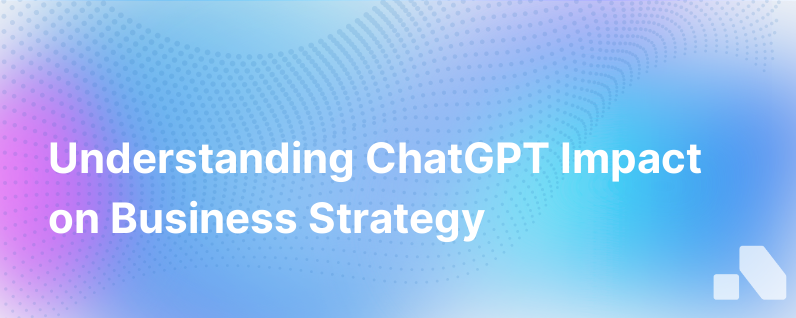
In the landscape of artificial intelligence (AI), one of the most groundbreaking developments has been the advent of language processing models that simulate human conversation: chatbots. At their forefront lies ChatGPT – an AI language model developed by OpenAI that has garnered widespread attention for its ability to understand and generate human-like text. In this article, we will delve deep into the world of ChatGPT, unraveling its workings, capabilities, limitations, and potential implications for the future.
Introduction to ChatGPT
First things first: the "GPT" in ChatGPT stands for "Generative Pre-training Transformer." This name encapsulates the model's core mechanisms – it's a transformer-based machine learning model that has been pre-trained on a diverse range of internet text. It generates language by predicting the next word in a sequence of words, a process similar to the predictive text features found on smartphones but vastly more sophisticated.
The model's architecture, first introduced in a paper by Vaswani et al. in 2017, represents a significant shift from earlier sequence learning models. Transformers use self-attention mechanisms that weigh the significance of each word in a sentence, enabling the model to generate highly relevant and contextually appropriate responses.
The latest iteration of this model series, born from years of iterative development and refinement, has reached the public in the form of conversational agents capable of tackling an outstandingly wide range of topics and formats, from casual chit-chat to more complex tasks like coding, tutoring, and creative writing.
How Does ChatGPT Work?
Under the hood, ChatGPT uses what's called "unsupervised learning." It digests vast swaths of text data, learning patterns and structures of languages without specific guidance on how to interpret the information. Over time, it forms associations – for example, relating words to make sentences or sensing the sentiment behind a string of text – essentially identifying and mimicking the nuances of natural language.
Through pre-training, the model gets a fundamental grasp of language, but it is the subsequent fine-tuning that adapts it to specific tasks or subjects. This process involves training the model on a narrower dataset, such as customer service dialogues or technical manuals, to specialize its responses in those areas.
Capabilities of ChatGPT
ChatGPT is lauded for its remarkable ability to perform a variety of language-based tasks. Here's a highlight of its capabilities:
- Conversation: ChatGPT can lead and maintain a dialogue across a spectrum of subjects, proving to be an engaging conversationalist.
- Writing Assistance: From formulating emails to drafting essays or producing creative content, ChatGPT’s writing skills are versatile and robust.
- Knowledge Sharing: Though limited to its training data, the model can provide explanations on a wide range of topics, acting as a digital tutor.
- Programming Help: Given a problem description, ChatGPT can generate snippets of code in several languages, aiding in programming and development.
This versatility makes ChatGPT an asset in sectors ranging from education and customer service to software development and entertainment.
Limitations of ChatGPT
Despite its advanced abilities, ChatGPT has its share of limitations:
- Data Cut-off: The knowledge of ChatGPT is constrained by its training data. It doesn't "know" about events or developments that occurred after its last update.
- Misinformation Risk: GPT models occasionally generate plausible-sounding but incorrect or nonsensical answers, a behavior known as "hallucination."
- Bias in Training Data: AI models can inherit and perpetuate biases present in their training data, leading to unfair or sensitive outputs that require careful handling.
- Lack of True Understanding: ChatGPT doesn't "understand" content as humans do. Its responses, while coherent, result from patterns in data rather than comprehension.
Awareness of these limitations is critical when considering the deployment of ChatGPT in various use cases.
The Implications of ChatGPT
The emergence of ChatGPT and similar models marks a pivotal moment in AI. Here are some of the broader implications:
- Automation and Job Transformation: ChatGPT could automate aspects of customer support, content creation, and coding, among others, leading to job displacement but also transformation, as new roles will emerge to work alongside AI.
- Education and Accessibility: In education, ChatGPT can provide tutoring and writing assistance, making learning more accessible but also posing challenges regarding academic integrity.
- Ethical Considerations: The potential for spreading misinformation and the model's biases require careful and ethical consideration in deployment.
- Consumer Expectations: As users become more familiar with advanced AI-driven interactions, their expectations for digital services' responsiveness and personalization are likely to increase.
Future Direction
The development of AI conversational models is seeing exponential growth. OpenAI and other organizations continue to refine these systems, striving for models that can better understand and respond to nuances, sarcascism, and more complex aspects of language. Additionally, there are considerable efforts to mitigate biases and improve the factual accuracy of such models, making them more reliable and trustworthy.
Research is also branching out to multimodal models that can understand and generate not just text but images, videos, and sounds, moving toward a future where AI can interact with multiple forms of human communication.
Aomni and the Integration of AI in Sales
AI models like ChatGPT can be a game-changer in the B2B sales process. At Aomni, we incorporate such AI-driven innovation to facilitate strategic selling. With our platform, sales teams get real-time account research, competitive insights, and personalized content creation with minimal manual effort, streamlining the sales process and enabling sellers to focus on what they do best – building relationships and closing deals.
Conclusion
ChatGPT represents the spearhead of a burgeoning AI revolution, pushing the boundaries of machine learning and natural language processing. As this technology continues to evolve, it promises to redefine the way we interact with machines, access information, and conduct business. It encapsulates the potential of AI to augment human capability and creativity, opening a new era of human-computer collaboration, with models like Aomni serving as a testament to its practical application in the business world.